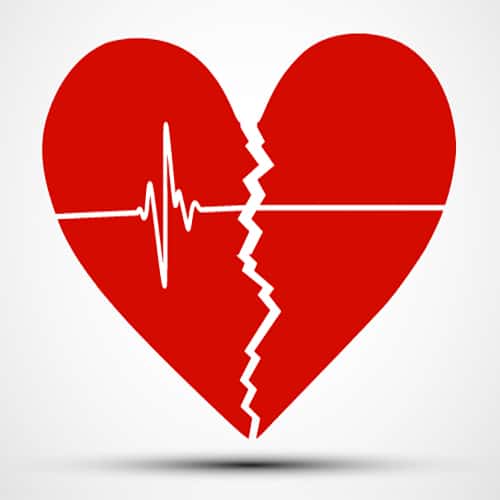The American Academy of Pediatrics (AAP) has updated its 2012 policy statement for primary care providers (PCPs) on prevention of sudden cardiac arrest (SCA) and sudden cardiac death (SCD) in young people. The update includes a comprehensive review of conditions that should prompt more attention and cardiology evaluation.
The AAP notes that while there is a growing movement to identify pediatric and young adult athletes who may be at risk for SCA or SCD during sports participation, it is not only athletes who have an increased risk of sudden cardiac events. The overall strategy for prevention of sudden death in young people is that the same screening detail used for athletes should also be applied to nonathletes. The difficult task of identifying those at risk for cardiac events often begins with the PCP via routine physical examination or when addressing specific symptoms.
The updated AAP policy statement provides PCPs with a strategy for screening, evaluation, and management of risk of SCA and SCD in young persons with practical and updated information on genetic testing and how to handle post-SCA and post-SCD situations.
The update continues to recommend using four main screening questions, not just for athletes, but for all children, directed toward SCA and SCD detection. A positive response suggests an increased risk for SCA and SCD.
- Have you ever fainted, passed out, or had an unexplained seizure suddenly and without warning, especially during exercise or in response to sudden loud noises, such as doorbells, alarm clocks, and ringing telephones?
- Have you ever had exercise-related chest pains or shortness of breath?
- Has anyone in your immediate family (parents, grandparents, siblings) or other, more distant relatives (aunts, uncles, cousins) died of heart problems or had an unexpected sudden death before age 50? This would include unexpected drownings, unexplained auto crashes in which the relative was driving, or sudden infant death syndrome (SIDS).
- Are you related to anyone with hypertrophic cardiomyopathy (HCM) or hypertrophic obstructive cardiomyopathy, Marfan syndrome, arrhythmogenic right ventricular cardiomyopathy (ACM), long QT syndrome (LQTS), short QT syndrome (SQTS), Brugada syndrome (brS), or catecholaminergic polymorphic ventricular tachycardia (CPVT), or anyone younger than 50 years of age with a pacemaker or implantable defibrillator?
A positive response to one these four questions or an abnormal electrocardiogram (ECG) should prompt further in vestigation that may include referral to a pediatric cardiologist or pediatric electrophysiologist.
Conditions Putting Young Patients at Risk for SCA or SCD:
- Cardiomyopathies: dilated cardiomyopathy; HCM; restrictive cardiomyopathy; arrhythmogenic cardiomyopathy; unclassified cardiomyopathies. Morphologic differences are significant between each type of cardiomyopathy; thus, imaging is advised. The potential for life-threatening arrhythmias is a unifying factor for all of these cardiomyopathies.
- Channelopathies: This defect is identified in patients who otherwise have normal cardiac anatomy and function. The defect involves the ion channels in the cardiac cell membrane or in intracellular proteins that interact with ion transport and may result in identifiable abnormalities on the ECG. The primary channel opathies include the following: LQTS; SQTS; BrS; CPVT; idiopathic ventricular fibrillation (IVF).
- Congenital heart disease: Patients with congenital heart defects are at risk for arrythmias.
- Wolff-Parkinson-White syndrome: This finding on the ECG indicates there is at least 1 antegrade from atrium to ventricle. These pathways are most commonly noted for causing supraventricular tachycardia.
- Commotio cordis: A sudden impact to the chest that causes ventricular fibrillation (VF) and results in SCA or SCD without evidence of cardiac damage. Baseball is the sport with the highest frequency of commotio cordis events.
- Anomalous coronary arteries: A high index of suspicion is advised for patients with syncope or atypical chest pain.
- Aortopathies: Patients with aortopathies (such as Marfan syndrome, familial thoracic aortic aneurysm, and dissection) are at increased risk of aortic dilation and dissection.
The Goal of Cardiac Screening
The cornerstones of screening for all children and youth are a thorough personal history, family history, and physical examination. The American Heart Association (AHA) recommends a 14-point history and physical screening for athletic participation, commonly known as the preparticipation evaluation (PPE). A positive response to any of the 14 points can prompt the need for cardiovascular evaluation at the discretion of the PCP. This screening tends to detect cardiac problems regardless of their significance.
Screening for SCA and SCD should be performed in all children—athlete or not—at the same time as the PPE or at a minimum of every 3 years or on entry into middle or junior high school and into high school. Depending on family and PCP concerns, more frequent screening could be appropriate.
The PCP’s Role in Secondary Prevention
When a child has a cardiac arrest, secondary prevention efforts, including resuscitation, are required. Prompt recognition of cardiac arrest with high-quality cardiopulmonary resuscitation (CPR) and early de fibrillation are the major determinants of survival. The AAP and the AHA support efforts to improve survival by early symptom recognition, use of 911 or EMS, effective bystander CPR, and deployment and use of automated external defibrillators in the community.
A comprehensive evaluation of the survivor of cardiac arrest should be undertaken at the direction of a cardiologist with expertise in SCA- and SCD-associated conditions. If clinical phenotype is suspected or proven, targeted genetic testing may be indicated. Results should be interpreted in consultation with a specialist in inherited arrhythmia conditions, a specialist in genetics, and/or a genetic counselor.
The guidelines discuss what to do when a child cannot be resuscitated. Communication between the healthcare team and the family can have a significant effect on the grief response. Providing information on bereavement support groups can be helpful.
Evaluation of remaining family members through screening of family members provides an opportunity to identify at-risk individuals and initiate management. It has been recommended that first-degree relatives of patients with SCA and SCD be informed of the potentially increased risk. An assessment should be offered at a center with experience in the diagnosis and management of inherited cardiac diseases.
Implantable cardiovascular devices, including pacemakers, implantable cardioverter-defibrillator, and implantable loop recorders, can store substantial amounts of diagnostic data related to arrhythmia documentation.
SUMMARY
- PCPs should be aware of the features of the clinical history, family history, and physical examination suggestive of a risk for SCA and SCD.
- All children should be evaluated for conditions predisposing to SCA and SCD during routine healthcare.
- A thorough and detailed history, family history, and physical examination are necessary to begin assessing SCA and SCD risk.
- The ECG should be the first test ordered when there are concerns about SCA risk. The ECG should be interpreted by pediatric cardiologists or pediatric electrophysiologists. ECGs should not be performed in isolation without clinical history. Referral to a specialist should be considered.
- Do not trust computer interpretation of the ECG.
Many SCA and SCD victims cannot be identified before their event, even with testing. Therefore, secondary prevention efforts must not be overlooked by those evaluating large numbers of pediatric patients. Although focusing on prevention efforts in all children can seem to create a burden on PCPs by extending the screening program to more patients, simplification to the four questions posed in the guidelines can allow this screening to become incorporated into the routine visit at a minimum of every 3 years.






